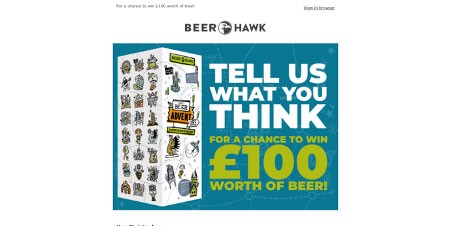There's a myth that email marketing is dead. Untrue, according to the marketers who's email results say otherwise. In this special guest post, Chris Cano of marketing automation specialists DotDigital shares his secrets to a successful email strategy for your business.
Email continues to be the most powerful of the online channels. The average ROI for every dollar spent on email marketing is USD$50 (DMA, 2019). That’s the value email can drive in your e-commerce strategy. The unique ability to connect different data and enrich insight is what drives the success of email marketing for e-commerce merchants. Email automation for marketing helps you create personalized conversations with your customers at scale, from sign-up to long-term loyalty programs that drive brand advocacy. The goal is to deliver seamless engagements across the entire customer lifecycle, and email is the perfect channel for that journey.
How to make your email marketing strategy work for your business
The myth of the death of email continues to perplex marketers whose email results say otherwise. Email continues to be the most powerful of the online channels. The average ROI for every dollar spent on email marketing is USD$50 (DMA, 2019). That’s the value email can drive in your e-commerce strategy. The unique ability to connect different data and enrich insight is what drives the success of email marketing for e-commerce merchants. Email automation helps you create personalized conversations with your customers at scale, from sign-up to long-term loyalty
Growing your email list
The number-one rule for your contact list is this: Quality beats quantity every time.
While having lots of contacts is great, having bad data isn’t. It’s important to focus on contacts who proactively interact with your brand, and use behavioral data to communicate with them effectively. Emailing unengaged lists carries the risk of damaging your deliverability - and having a poor sender reputation could lead to an embargo of your ‘wanted’ email campaigns.
Here are three simple best-practice methods to grow your lists effectively:
Friendly from name
The 'from' or 'sender name' is the inbox field that tells the recipient who has sent the message. Be careful about what you put here – or what’s put there automatically – because if your subscriber doesn’t recognize you, they may mark your message as spam. Make sure your 'friendly from' name is 100% on brand.
Go for stand-out subject lines
The first rule of thumb is that your subject line accurately reflects the email’s content. You don’t want to mislead your recipients. That being said, it needs to be engaging enough to motivate the subscriber to open. Remember, your email is competing against a barrage of other emails, so you need to be noticed and stand out from the crowd. And if you’re worried about how this might impact your results, it’s sensible to A/B test different variations to see which option performs best. If you want some deeper advice from DotDigital on how to write subject lines that get opened, check out their blog on the subject.
Use the preheader text
The preview or preheader text supports the subject line with more context about the email’s contents. It’s a summary that follows the subject line within the inbox display. We’re in a mobile era now where anywhere between 40% and 60% of emails are opened on a mobile device1. It’s therefore important for e-commerce retailers to use the preview text as a further tease to boost opens. Like subject lines, you can A/B test the preheader to see what captures the subscriber’s attention.
Email automation systems that will grow your business
3. Post-purchase program
The aftersales program engages the customer further along the lifecycle than the welcome program, but both series share similar principles. Intended to build brand credibility, this program aims to excite the customer about their recent purchase. This ultimately brings customers closer to your brand.
What are the benefits?
- Saying thank you for an order builds customer loyalty.
- Giving tips on how to use the product drives brand value and minimizes returns.
- Recommending complementary products helps generate repeat purchase opportunities – remember to do this with tact, and keep the suggestions close to the type of purchase made.
- Collecting extra data at this point helps you personalize the online customer experience further.
Reaching out to shoppers after they’ve purchased is an effective way to re-energize the customer relationship. It’ll mean your brand is put in front of the mind. An important aspect is collecting valuable customer feedback – on the product purchased as well as the online shopping experience. You’ll be able to action the insight you gather, improving your products, services, and user experience.
7. Customer retention program
Brand building
The focus of the customer retention program should be the customer relationship rather than sales. It’ll pay off in the long term. Keeping your brand at the forefront gives customers the chance to become lifelong advocates. To help things along, content marketing should be the star of the show.
Here are some great content ideas to drive your brand loyalty:
- Contests and prize draws
- Video content
- User-generated content (like social mentions or images)
- Exclusive event invitations
- New product reviews
- Advice and guides for your customer
- Customer feedback forms – the key to maximizing customer retention – that run off the back of transaction and customer profiling data
- Product how-to guides/care hints and tips
VIP customers
Segmentation lets you group customers together based on specific criteria and target them more effectively. That criteria might be based on high spend, for instance, which allows you to identify valuable customers that would benefit from an exclusive loyalty program. You can apply the RFM – recency, frequency, monetary value – model to email marketing to help you understand who your best customers are and where you should put your retention efforts. One thing is for sure: by actively retaining your VIP segment, you’ll be maximizing the revenue you can generate through your email campaigns.
Data that can help you identify your most valuable customers:
- Recent visits and purchases
- Frequency of visits and purchases
- Average order value (AOV)
- Total spend or customer lifetime value
- Email marketing engagement – opens and click-throughs
- Product returns
- Reviews and social engagement
Loyalty program
If you’re an online retailer then introducing a points-based loyalty scheme is a must. Building consumer trust and loyalty for your business are key and you can set up email automation – using your contacts’ preferences and purchase history – that incentivizes and rewards customer loyalty. Depending on how sticky the customer is, you could build different programs that encourage them to spend and earn more.
Part of Beer Hawk’s loyalty strategy is beer tokens – every time a customer places an order they earn 5% back on every £1 they spend on beer.
Get started with email marketing programs
Successful email marketing is about tracking, testing, and adapting. Start with important email programs like the welcome series and post-purchase program, then ramp up with other automation along the way. Remember to test everything from message to content and segments. What works for one recipient might not work for another, so always give subscribers and customers options about what content they receive and through which channel.
For more inspiration, visit https://blog.dotdigital.com/.
References:
1 - Mobile Email Usage Statistics
























































